John Hurrell – 11 August, 2021
Neate's resulting canvases, bearing agitated oily marks (hints of Kirkeby, Rothenberg, Guston and de Kooning), revel in the transformative nature of painting as it is being produced, seemingly like the inherently mutating nature of life in front of a camera. They also embrace the emotion of the lived photographed family life, its space-specific memories being later recalled and the maker's (or perhaps viewer's) body/mind responding accordingly.
Grisailles are normally figure paintings made in various grey tones that-as monochromes-emphasise plasticity, the modelling of form in space, along with the impact of raking light. They mimic cathedral statuary. This method is also the first stage, within oil painting, of subtly building up skin and clothing colours using translucent glazes.
In this show these chromatically limited images by Ilam lecturer Robin Neate, however, are not preoccupied with such clarity of mass or volume. His flurries of angular brushmarks are greasy and slippery in order to counter any quickly-apprehended definition of edge. These abstractions focus on emotion and the processes of time; sometimes in mark-making, sometimes not.
Sparked off by eleven of his parents’ black and white photographs that he discovered in an album, these eleven churning gestural studies in grey (with occasional diagonal tracking-lines of dry ochre) speak of the transience and fluidity of life, the state of turbulent flux within every minute each one of us breathes. However, they are fixed in stasis for us to ponder, like the generative emulsion on photographic paper, seen before paint was applied to canvas and then activated into forms.
Neate‘s resulting canvases, bearing agitated oily marks (hints of Kirkeby, Rothenberg, Guston and de Kooning), revel in the transformative nature of painting as it is being produced, seemingly like the inherently mutating nature of life in front of a camera. They also embrace the emotion of the lived photographed family experience, its space-specific memories being later recalled and the maker’s (or perhaps viewer’s) body/mind responding accordingly.
The artist’s use of rusty ochres in these brusherly abstractions provides a kind of warm foil (through delicate disconnected floating grids) to the pulsing rhythms of the cool modulated greys in the background. The stunted, burnt-orange lines hover and dance in front of the tremulous quivering ‘sea’ behind. Other smeary charcoal-coloured blotches introduce drama.
Although these are abstractions, occasionally you can spot clues that connect with the source photographs. The most colourful work (Untitled 1) presents traces of two leaning and sitting figures, one attached to a face in the top righthand corner. Untitled 3 looks like a folded striped football jersey; and Untitled 8, some scrawny trees in front of a house. Untitled 9 is more oblique with its diamond patterns, and seems to refer to Neate’s earlier harlequin paintings of 2004-5.
For me, the less colourful paintings work best. I like their understated focus; their restraint. Neate clearly likes floating fields of disembodied marks, like (with Untitled 7) squadrons of evenly spaced fireflies loitering in a mist above a menacing pair of dark hands, and they don’t get entangled with too much high temperature chroma. These are simple but fabulous. There are some gorgeous and intriguing works here.
John Hurrell

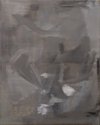

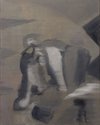
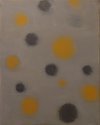


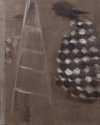


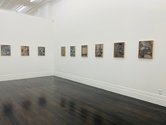
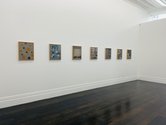
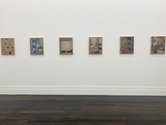
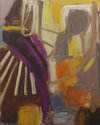
 Advertising in this column
Advertising in this column Two Rooms presents a program of residencies and projects
Two Rooms presents a program of residencies and projects



This Discussion has 0 comments.
Comment
Participate
Register to Participate.
Sign in
Sign in to an existing account.